Every year for the Baja 1000, thousands of racers, support trucks, crew members, and hangers on invade the Baja California Sur peninsula for an all-out balls-to-the-wall bacchanalia of speed, powered by cheap gasoline, and even cheaper beer. An imperialist invasion force of Ford Raptors drove south over the border the week before the race, hauling loads of specially-blended race fuel, comprehensive spares packages, and SpaceX Starlink systems.
The Baja 1000 is among the most prestigious off-road events in the world, viewed in the community as perhaps second only to the Dakar. Baja brings different challenges than Dakar, in that it happens all at once instead of spread out over several weeks of stages. This year’s event, the 56th running of the wild off-road race, totaled 1302 miles, and for the first time ever ran from the southern tip of the peninsula in La Paz north to Ensenada.
There isn’t much here to win besides the glory of putting your name in Wikipedia. There is no class, including the overall win, that pays out a purse to justify the expense of running this race. The risk is significantly higher than any material reward, that’s for sure. I have always held a personal reverence for this race, and I wanted to find out what it was that made this event such a draw first hand. So I headed south of the border last month to get hands on.
(Full Disclosure: Can-Am brought me to Mexico to embed with the factory-supported team. The company paid for me to travel, eat, and stay free of charge.)
Can-Am was putting its new Maverick R race buggy to the test with this extra-long Baja 1302 race and asked if I wanted to come along for the journey. I’m in the early stages of training to get myself in a car or on a motorcycle and racing at Baja in a few years, so of course I wanted to jump in and see what it takes to get to the finish, and why someone would keep coming back. How would Phil Blurton and his team from NorCal fare in the Pro UTV Forced Induction class? Read on, my friends.
The History Of The Race
Back in 1962 Dave Ekins set out to prove the Honda CL72 scrambler motorcycle was reliable and easy to ride. His brother, the legendary Bud Ekins, chose the route from Tijuana to La Paz, 950-ish miles of rocks, sandy washes, mountains, and dirt. Paved roads in that area were basically non-existent, and the way forward was treacherous, to say the least. Ekins proved his time by sending telegraphs from offices at either end of the trip, running the peninsula in 39 hours and 56 minutes.
In April of 1967, Bruce Meyers, he of Meyers Manx fame, set out to beat the peninsula record in his fiberglass buggy prototype, gaining notoriety and proof of concept for his fledgling company. Meyers beat Ekins’ time by more than five hours, and the race was on.
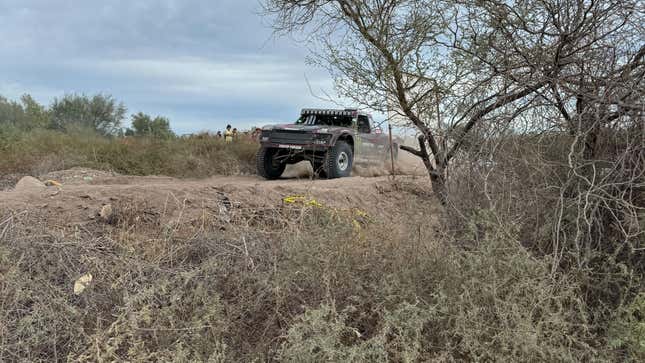
NORRA was founded and kicked off the Mexican 1000 race later that year, but when the fuel crisis hit, it abandoned the race for 1974, citing the cost of fuel. A Mexican company called Baja Sports Committee stepped in to run things for ‘74, changing the name of the event to the Baja Mil. The event ran fairly successfully, but the company gave up on it for 1975, and the Mexican government invited SCORE to come run the event from then onward.
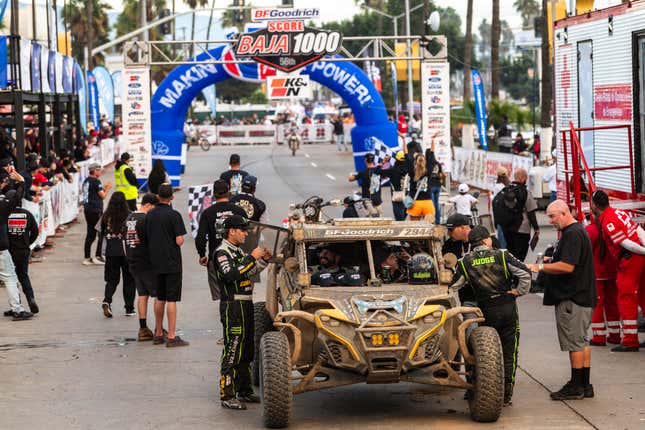
In 56 years, the event has drawn mega competition from all over the world, though the overall victory has never been taken by someone not either American or Mexican. Icons of the sport have been born in Baja, and some of the best racers of all time have gravitated toward this event. Parnelli Jones, Ivan Stewart, Mickey Thompson, Robby Gordon, and BJ Baldwin all went to Mexico for glory and came back victorious.
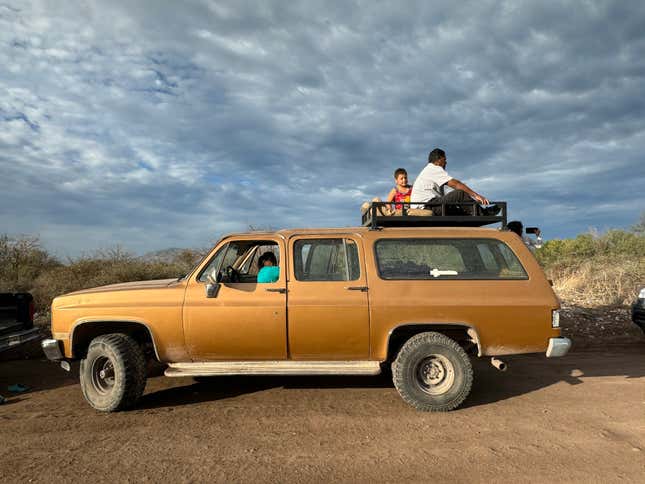
The 2023 Race
From the drop of the flag, Phil was incredibly fast in the new Maverick R. This class doesn’t allow for a ton of modification from stock, so the team was working with basically a lightly modified stock UTV, upgraded largely for safety concerns, and using a lot of factory components. With a new high upper control arm design and 240 horsepower, it’s going to be fast. But it’s also the car’s first race at Baja.
In order to service the car with fresh gasoline, the Can-Am team had ten support trucks running up and down the peninsula, trying to beat No. 2944 to its scheduled pit stop locations in order to top it up and execute two driver changes along the route. Picture the Le Mans 24, but instead of going in big circles around the French countryside, the race continues on in a point-to-point race from Le Mans, France to Warsaw, Poland. Servicing the cars becomes much harder when they aren’t stopping in the same spot every time.
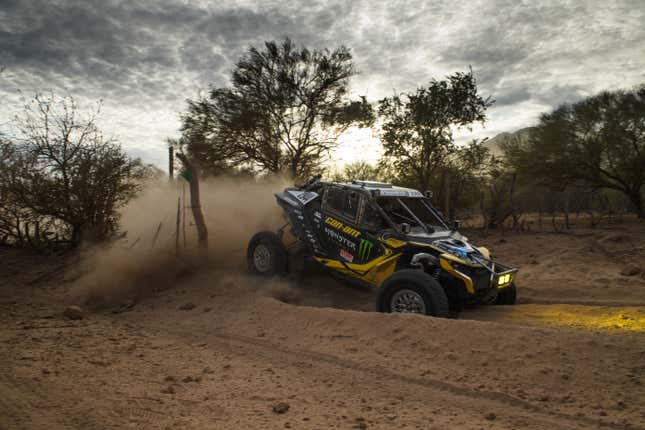
I was stationed in an F450 Super Duty hauling a trailer with two Can-Am pre-runners. We departed La Paz at four in the morning to get to our first pit stop ahead of the traffic, 300 miles into the race, the car’s third service stop. If we’d waited until closer to the race start time, we’d have been mired in traffic leaving La Paz.
The starting order for the Baja 1000 is set by your finishing position at the Mint 400 several months prior. Because Phil and his team didn’t run the Mint, they were relegated to 13th starting position in class with a 30 second gap between starts. By the time Phil had hit the 200 mile mark, he’d caught up that 7-minute deficit to the class leader, passed, and pulled out a few minutes on the field. At the 300 mile mark when I saw the car for the first time in the race, he was gaining significant time on some of the higher classes, including the larger engine naturally-aspirated Polaris teams.
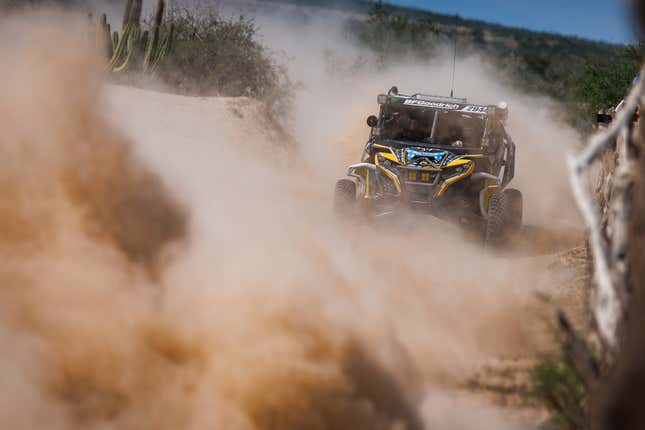
After a 15-second pit stop for re-fueling and cleaning the lights, the car was back underway, well in the lead of the class. By that point it was already early afternoon, and there were still 1,000 miles of race to run for the Can-Am. The car and driver had been pushing non-stop for almost six hours by that point, while I’d been hanging out in a tiny Mexican village eating fish tacos and drinking Coronas from a roadside hut. My little pit stop hit of adrenaline was nothing compared to the flurry of action happening over the constant satellite connection between driver and the race chief engineer.
For most of the race the truck I was stationed in did not have cell signal or access to the internet. We met up with some of the other trucks to transfer fuel from the 55 gallon drums on our trailer to the quick-fill cans that each other truck was carrying. We were the tanker truck heading up the road, filling the other fuelers, but after that we were on our own for several hours of night driving. Our next major stop to help run a pit was 700 miles further into the race, and it was going to take most of the night to get there.
I will contend that running a chase vehicle at Baja is more dangerous than running the race. At least the racers all have helmets, body armor, and wide open space, and—if you’re not on a motorcycle or ATV—you have a cage around you. With thousands of chase vehicles on the peninsula, the two-lane highways of Baja California Sur get congested, and everyone is in a goddang hurry. The 18-wheelers are still hauling freight, and the roads get pretty aggressive after dark. The roads are barely wide enough for two freight trucks to pass each other going opposite ways.

The amount of times I saw a Ford Raptor loaded down with gear swing out to pass a semi on a blind hill about made me shit myself. Or maybe that was the fish tacos. Driving chase at Baja is competitive road tripping for adrenaline-fueled middle-aged dads jacked up on energy drinks.
When we could get just enough internet to track down the Can-Am relative to its competition, or watch the team’s private live-stream, we’d see a man on a tear, totally beating up the rest of the world. But around 10 p.m. it all started to unravel. Nearing the end of Phil’s first stint in the car, he was sidelined for about an hour, losing the lead of the race waiting for it to be fixed. Around sunup, after clawing back to within minutes of the lead again, the car’s left front shock absorber failed.

I’d watched the team practice changing shock absorbers the day before the race, running like a well-oiled machine. That practice paid off, when they took the stock shocks pilfered from the pre-runner and swapped them into the race car over the course of about seven minutes. With a floor jack. In the dirt. A Le Mans team could never.
Phil jumped back into the car and was off on a tear to re-gain the lead, and had eaten quite a lot of his deficit back through speed when a third minor component failure sidelined that effort. After it had been patched up and sent on again to the finish, Blurton and his team was resigned to third place in class. Even after the two prior failures, the team was optimistic that he’d gain it back, but the third issue put everybody under a cloud of gloom. That last three hundred miles were a real downer. This was a team for which a class win was a foregone conclusion, and they’d really been aiming to take the fight to the higher classes, taking the overall UTV victory. If the race had gone without drama, they might damn well have done just that.
I know this feeling. I’ve felt it before, when I was at Le Mans in 2016 when Toyota had been leading from Porsche and was about to win its first 24 Hour. With just three minutes and twenty seconds to go, the car broke and the whole thing had been thrown away. That’s why we run the race; even the most minor of parts failures can take your entire race and throw it in the trash. Salvaging third for the new Can-Am is still mighty impressive (actually Can-Am went 1-2-3, as older Maverick X3s took first and second in class), but the team wanted more and saw their failure unfold.
What’s My Takeaway?
The biggest thing I learned at Baja is that no matter how much you prepare, or how fast your machine is, the smallest of things can still prevent you from winning. This has been a known factor in endurance racing for decades, but somehow it never dawned on me that the Baja 1000 is perhaps the most grueling endurance race to ever have been run.
The level of competition these days is so high that if you stop to check your systems at every fuel service, you lose by default. A fuel-only stop is less than 30 seconds. Any more than that, and you’re basically toast. It’s a flat-out sprint over 1300 miles of racing, much like Le Mans or Daytona have become. There’s no excuse for broken parts anymore, and if you break anything, any little thing, you lose. You can’t take it easy like you might have been able to thirty years ago; it’s throttle down from the drop of the flag until you reach the finish.
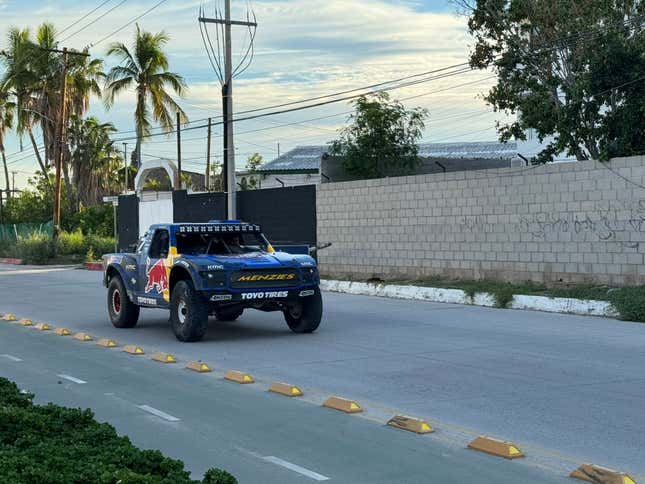
This race is all-consuming. There’s just something infectious about it. The week leading up to the event is a whirling dervish of manic activity, and the week after the race is when everyone recuperates and winds down from the full effect of the race. Once you wind down from the month of crescendo and fallout, the race sticks with you. It’s one of the most difficult feats on the planet, and that’s why people keep coming back.
What’s The Draw?
I have often said that the mind of a racer is similar to the mind of a Midwesterner. You aren’t drawn to the world of motorsport unless you understand and are consumed by the idea of overcoming adversity. Facing off against the competition, forcing yourself to do things most humans fear, and relishing the fact that you’re doing it, that’s what it is to be a good competitor.
There’s a good book you need to read to understand the Midwesterner, David Giffels’ The Hard Way On Purpose, which is ostensibly a collection of essays on growing up in Akron, Ohio. Really it’s a sociological exploration of this desire that motivates some humans to extreme competition like the Baja. Racing Baja isn’t really competing against other drivers, it’s a competition against yourself. As a driver you’re entering this competition not because there is some huge prize or recognition for your efforts. You do the hard thing precisely because it is hard and you want to see if you can.
For those of us with this kind of wiring mixup in our brains, the act of doing something is the reward itself. There probably isn’t a worse feeling than spending months and tens of thousands of dollars preparing for a race only to have it all come crashing down with a three dollar component failure about 20 hours in, but ironically that’s the part that keeps us motivated. You don’t relish the late nights, the long hours, the pure body punishment that comes with racing for 26 hours in some of the harshest environments in the world. It isn’t the doing, it’s the having done. That’s what keeps these 350-ish racers coming back to Baja year after year.
It’s a challenge, and we were built to take these challenges head on. What more reason do you need?
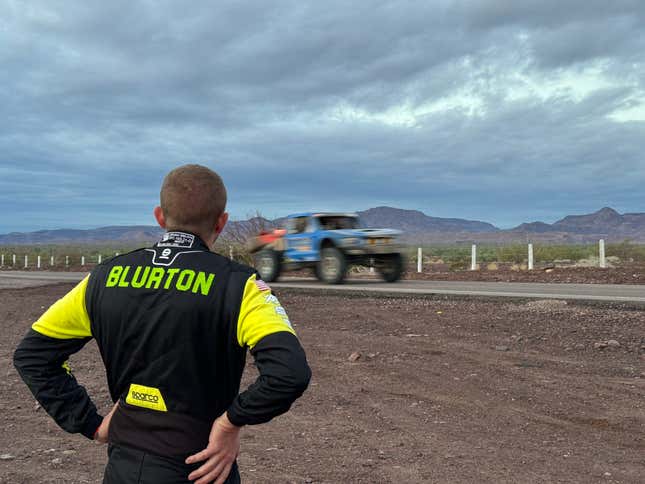
Parting Thoughts
If I can offer one piece of advice: When the roadside taco stand asks if you want queso, you decline. I had a horrific 24-hour stomach bug right in the middle of the second day of the race, and I’m not sure I’ve ever felt worse in my life. Which brings me to my second piece of advice. If you’re out in the middle of the desert with a stomach bug, be prepared. This was a fully prepared team, as they packed heavy-duty garbage bags, toilet paper, and rubber gloves for this eventuality. That’s right, Torchinsky is no longer the only Jalop to have shit in a bag on purpose. At least he had a choice.

